Quranic Cosmology: Challenging Aristotelian Views on the Universe
In the dawn of human civilization, the hunter-gatherer forebearers embarked on a profound journey of discovery, initially navigating the uncharted terrains of dense forests and vast oceans by gazing skyward, seeking guidance from the celestial bodies. As the epoch of agriculture unfurled its roots, an inherent necessity burgeoned—the meticulous observation of nature and the cosmos to decipher the nuances of weather patterns. It was within this crucible that the genesis of human cosmology took root.
The nascent human understanding of the cosmos burgeoned within the tapestry of diverse civilizations, enshrouded in an array of worldviews and myths. However, these early perceptions were constrained, confined within the narrow ambit of ancient beliefs. To primitive man, the Earth was ensconced atop the sturdy back of a bull or poised delicately upon the neck of an elephant, perched astride a monstrous tortoise, a sinewy serpent, or gliding through the aqueous expanse upon a colossal fish. The expanse of the sky remained a realm tantalizingly proximate.
Contrary to the fabric of such intricate myths, the advent of scientific astronomy, poised upon empirical observations, burgeoned forth within the crucible of ancient Greece. Heralded by luminaries such as Pythagoras, whose abode lay in Samos, Greece, the pursuit of understanding the cosmos pivoted upon numerical elucidation. Pythagoras emerged as a luminary unravelling the enigmas of the cosmos, propounding the sphericity of Earth and explicating the diurnal cycle through its rotation. Aristotle subsequently emerged as a torchbearer, manifesting the cosmological vistas envisioned by Pythagoras, ushering forth a legacy carried forward by the likes of Plato and Eudoxus.
Almost nineteen centuries elapsed before Western philosophy began to tread the illuminated path laid out by Aristotle. A comprehension of Aristotelian conceptions concerning the universe becomes pivotal to grasp the depth and scientific essence encapsulated within the astronomical portrayal presented in the Holy Qur'an during an epoch deeply entrenched in Aristotelian doctrines.
In Aristotle's cosmological framework, the universe assumes an eternal form, devoid of commencement and termination, and delimited in its expanse. Central to his doctrine was the assertion of Earth's centrality within the cosmos, positing the stationary Earth as the hub around which the sun, moon, planets, and stars orbited. A foundational tenet in Aristotelian physics postulated the immutable nature of the universe, steadfast in its constancy.
Within Aristotle's conceptualization, Earth comprised four fundamental elements: earth, water, fire, and air. The terrestrial realm saw the descent of earth and water while fire and air ascended. Conversely, the celestial bodies, distinct from terrestrial beings, traversed the heavens. Aristotle's conviction held that these celestial entities were constituted of an immortal essence known as aether, distinctly separate from the terrestrial elements.
Dividing the universe into two spheres—above and below the moon—Aristotle delineated the upper realm as unchanging and immortal, contrasting sharply with the mutable and impermanent nature of Earth. These intricate cosmological insights coalesced within Aristotle's magnum opus, "On the Heavens," scribed in 340 BC, serving as the repository of his celestial theories and philosophical musings.
Aristotle's celestial perspectives emerged as a global focal point, weaving astronomy intricately into his cosmological tapestry. Throughout the span from the 3rd century AD to the 16th century, this celestial doctrine, largely unaltered, found resonance within Christian theological circles. Anchored in a geocentric universe where Earth, the realm of mortals, lay beneath the eternal heavens, this conception harmonized seamlessly with Christian beliefs, asserting humanity's central position as God's offspring.
This profound alignment led to the fervent embrace of Aristotle's cosmological paradigms by Christianity, cementing his stature as the preeminent philosopher. His theories became enmeshed within the fabric of the Roman Catholic Church's cosmology, echoing through centuries. However, despite their initial progressive nature, these very principles inadvertently impeded scientific progress, casting a shadow over advancements until the twilight of the Dark Ages in Europe.
It was amid this age, steeped in Aristotelian misunderstandings of the cosmos, that the revelations of the Prophet and the Holy Qur'an emerged. Yet, despite contemporary scrutiny often attempting to negate the Qur'an's divine essence by tethering it to ancient scientific paradigms or attributing its authorship solely to the Prophet, thorough investigations consistently debunk such contentions, highlighting the enduring profundity and timeless wisdom encapsulated within the Holy Qur'an.
First of all, if the Qur'an was composed based on the knowledge of the time of its revelation, at least one of the modern critics should have been able to establish at least one scientific error from it. Especially after explaining everything from the universe to various cosmic and biological phenomena, the challenge of the Qur'an itself to those who do not accept its divinity is to point out at least one contradiction. If a holy book is able to establish scientific truths by refuting all scientific contradictions at the time of presentation, then what other proof is needed for its divinity?
The fact that there is not a single verse that confirms the Aristotelian understanding of the universe that is without beginning or end, even if we examine it throughout the Qur'an, not only refutes such criticisms, but it can also be seen that modern science has arrived at the same model of the universe explained by the Qur'an. The Qur'an refutes the Aristotelian idea that the upper world, which was made of a special substance called ether, was eternal without change, by saying that the creation of the upper universe in its present state was through evolution from a state where the entire universe existed as a cloud of smoke.
“Then He turned towards the heaven when it was ˹still like˺ smoke, saying to it and to the earth, ‘Submit, willingly or unwillingly.’ They both responded, ‘We submit willingly.’ (Quran 41:11)
Upon the universe's descent to temperatures beneath 3000 degrees Celsius, a pivotal cosmic event unfolded as electrons merged with atomic nuclei, birthing the genesis of atoms. Prior to this cosmic milestone, unbound electrons permeated the universe, hindering the unfettered travel of photons—particles constituting light. The phenomenon known as "electron free fog" impeded the direct trajectory of light due to collisions with these ubiquitous electron particles, akin to the obstruction experienced in foggy conditions. The Qur'an's assertion of the universe existing in a state akin to smoke and subsequently transforming into its current form not only dismantles the Aristotelian notion of an eternally immutable cosmos but also remarkably corroborates modern scientific revelations.
Aristotle's cosmological premise posited a static universe comprised of an enduring substance termed ether. Conversely, the Qur'an perceptively delineates a dynamic cosmos, constantly undergoing change and evolution—a striking departure from Aristotle's conception.
We built the universe with ˹great˺ might, and We are certainly expanding ˹it˺. (Quran 51:47)
Contemporary scientific findings indicate the perpetual expansion of the universe, a groundbreaking revelation initially unveiled in 1924. This fundamental discovery was born from the analysis of luminous objects' spectral characteristics, wherein closer objects exhibit a higher frequency of light known as blue shift, while those situated at greater distances display a discernible lower frequency red hue, termed red shift. The pivotal observation instrumental to this understanding involved the detection of red shift through telescopic means, signifying a uniform departure of galaxies from an observer's standpoint. This empirical evidence substantiated the proposition of a universally expanding cosmos.
The expansion of the universe implies a pivotal aspect—its contraction in the past, inevitably leading to a conjectured state of singularity where all matter and energy converged. This scientific inference postulates that the universe, upon retracing its temporal course, condenses gradually until reaching a singular point. This theoretical construct serves as the basis for the scientific deduction that the universe's present configuration stems from a momentous separation and expansion originating from this singular state. Subsequently, empirical observations and accumulated evidence propelled the widespread acceptance of the big bang theory within the scientific community, paralleling the Quranic narrative on the genesis of the cosmos.
In the Quranic verse, " Do the disbelievers not realize that the heavens and earth were ˹once˺ one mass then we split them apart? And we created from water every living thing. Will they not then believe?" (Quran 21:30) lies a profound correction of prevailing misconceptions about the universe. The Quran, in its depiction of the universe's creation, challenges the antiquated beliefs spanning from Aristotelian doctrines to the concepts proposed by Steady State theorists. It eloquently refutes the notion of an eternal, unchanging universe without commencement or termination. Instead, it elucidates the transformation of the universe from a state of unity to its present form through a process of separation and expansion—a strikingly harmonious narrative with contemporary scientific understandings encapsulated within the big bang theory.
In succinct terms, the Qur'an remarkably avoids any scientific inaccuracies within its contemporary context and, through its corrective nature, presages the cosmological paradigm currently echoed in modern scientific advancements. The Quranic narrative, challenging and rectifying the fallacious deductions of past eras concerning the universe, also finds resonance in the scientific strides witnessed within the medieval Islamic world.
The Islamic world, fostering scientific inquiry, notably criticized Aristotle's geocentric cosmology as early as the twelfth century, drawing insights directly from the Qur'an. Fakhr al-Din al-Razi (1149-1209), for instance, refuted Aristotle's single-universe model orbiting Earth, extrapolating from the Qur’anic verse "All praises be to Allah, the lord of the worlds." His interpretation suggested the potential existence of numerous worlds or universes within a larger cosmos—an insight strikingly congruent with contemporary scientific hypotheses of multiverses governed by distinct physical laws. Modern scientific theories ranging from the Eternal Inflation model to String Theory inherently acknowledge such possibilities.
The Qur’anic depiction of the universe's creation further aligns with this nuanced understanding, elucidating the concept of multiple heavens, each ordained with distinct laws—a sentiment succinctly captured in the verse: "He made them seven heavens in two days and revealed to each heaven its law. And we adorned the lower heaven with lamps, and firmly secured it. All this is the firm plan of the All-Mighty, the All-Knowing." (41:12). This verse encapsulates a cosmological model advocating the existence of different heavens governed by diverse laws—an assertion mirroring the multifaceted possibilities underpinning modern scientific investigations.
The Quran intriguingly alludes to the arrangement of all visible constellations within the proximate celestial sphere. This revelation finds an uncanny correlation with scientific postulations, shedding light on the intricate composition of the universe. Scientifically, our perceptible reality—encompassing entities like the sun, planets, galaxies, soil, and air—constitutes a mere 4.6 percent of the universe's total composition. This discernible matter interacts with light, either reflecting or absorbing it. Intriguingly, the vast majority of the cosmos comprises 23 percent dark matter and 72 percent dark energy, both devoid of any interaction with light, forming an enigmatic backdrop to the observable universe.
The Quran succinctly delineates that the visible world, illuminated by light, resides within the confines of the nearby celestial expanse, orchestrated by Allah, the Exalted and All-Knowing.
It's evident that the Quran didn't hinge upon the scientific knowledge prevalent during its revelation but rather astutely rectified prevalent misconceptions of its time. Additionally, it's striking to observe how modern scientific discoveries converge with the Quranic worldview, originating from the sixth-century Arabian desert.
The sheer accuracy in depicting the universe during an era when modern science had yet to dawn raises a profound question: Who, other than Allah, could have imparted such precise knowledge?
“How can you be ungrateful to Allah Who bestowed life upon you when you were lifeless, then He will cause you to die and will again bring you back to life so that you will be returned to Him. It is He Who created for you all that is on earth and then turned above and fashioned it into seven heavens.” (Quran2:28, 29)
About the author:
Unais Kashmir is a PG Research Scholar in Islamic Thoughts and Modern Trends in Islamic Studies at Darul Huda Islamic University, Chemmad. He currently works as a freelance content writer for 'The Muslim Vibe', an online academic journal based in California, USA.
References;
Quran 41:11, 51:47, 21:30, 41:12, 2:28, 29
https://www.thelastdialogue.org/article/quran-says-universe-is-expanding/
The Evolution of Cosmologies, Oliver L. Reiser, Philosophy of Science, Vol. 19, No. 2 (Apr., 1952), pp. 93-107 (15 pages), The University of Chicago Press
https://armanfirmanofficial.wordpress.com/2019/09/12/the-scientific-fakhr-al-din-ar-razi/
‘The Quran on the expanding universe and the big bang theory’, Sherif Alkassimi (© 2008 IslamReligion.com), 16 Jun 2008, https://www.islamreligion.com/articles/1560/quran-on-expanding-universe-and-big-bang-theory
Formation and Evolution of the Universe, Part of Hall of the Universe, exhibition, American museum of natural history,
Disclaimer
The views expressed in this article are the author’s own and do not necessarily mirror Islamonweb’s editorial stance.

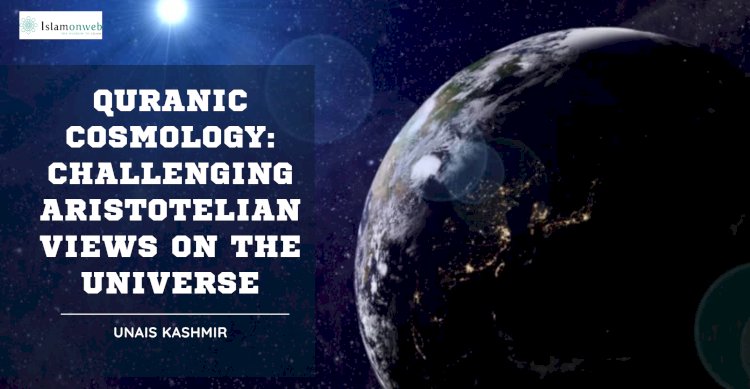


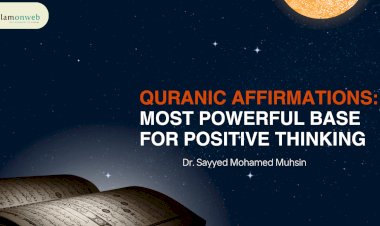
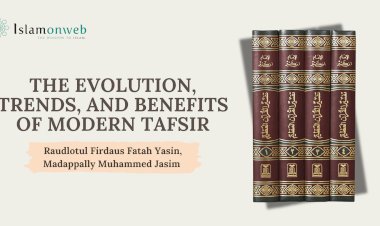


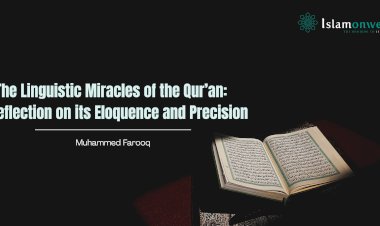
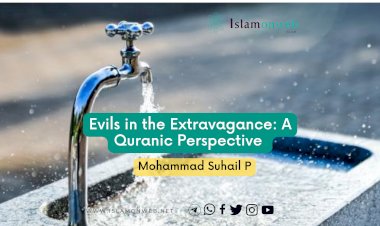














Leave A Comment